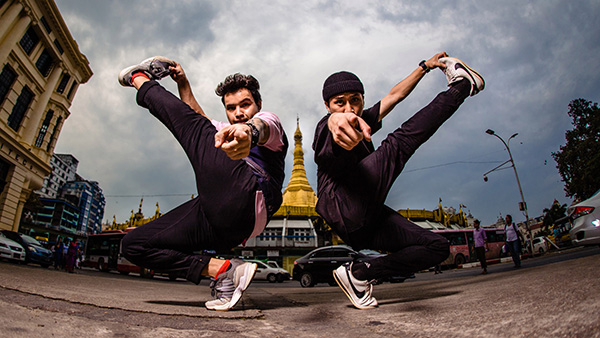ArtsEquator’s Southeast Asia Radar features articles and posts about arts and culture in Southeast Asia, drawn from local and regional websites and publications – aggregated content from outside sources, so we are exposed to a multitude of voices in the region. In the weekly Southeast Asia Radar, we publish a round-up of content that have been scoured and sifted from a range of regional news websites, blogs and media platforms.
Here is this week’s Southeast Asia Radar:

Colonial Imprisonment and Capitalist Imaginations: Museum Architecture in Singapore
Object Lessons Space, Singapore
“When viewed against the post-war developmental history of Southeast Asia, this gesture also hints less than subtly that Singapore has taken the place of the colonial master — a wry refrain from an Indonesian artist who visited the National Gallery Singapore soon after its opening reveals this sardonic, if resigned, gem: “To see the best Indonesian art, visit Singapore” — and should thus assume the political, if not then cultural, leadership of the region.”

Hanoi Bookshelf: A Quintessential Vietnamese Novel, Written in Memories
Urbanist Hanoi, Vietnam
“If you talk to Vietnamese people, you’ll see that most have gone through tremendous events. Any Vietnamese family’s history can be written into a novel,” Que Mai told me when we spoke last month. From Thi Bui and Da Ngan to Thanhha Lai and Ocean Vuong, many writers’ first novels are thinly veiled autobiographies, but that is not the case with The Mountains Sing.
That isn’t to say that the novel, which focuses on four generations of a Vietnamese family from French colonialism through land reform and the eventual reunification of the country, doesn’t draw considerably from Que Mai’s life: “This book is a work of fiction, but some of the characters’ experiences rely heavily on the experiences of my family members. For example, my father’s mother was killed during the Great Hunger…My grandfather was beaten so horrifically during the land reform that he subsequently died.”

Artist Eisa Jocson, winner of the Hugo Boss Asia Art Award, explores the body’s malleability
Business World, Philippines
“I see the body as malleable material sculpted by its history, conditions and location. Filipinos are known to service the world in various roles, from domestic worker, entertainer, nurse, seaman, musician, teacher etc. Labor force that uses affective labor (care) as the primary skill,” Ms. Jocson wrote. “I want the wider audience to encounter the complexities of the Filipino condition and how much care work is undervalued and exploited by the capitalist system.”

A decade in the limelight
Bangkok Post, Thailand
“Wichaya began training his documentarian lens on stage performers in 2014 with In Ter’s View: A Documentary Theatre, in which Thai actresses performed monologues and answered questions from the audience. A similar format has since been used with TV actresses in Nang (Rai): Siamese Femme Fatales and with an actor dealing with a career-defining role in Private Conversation: A Farewell To Love Of Siam. I picked this version of In Ter’s View because it’s one of the best products of international collaboration I’ve ever seen. In this incarnation, the interview-performance format felt more like a platform for artists to be freer than before. And these young and outspoken contemporary dancers just stole my heart with their charm, intellect and courage.”

Can street dancing battle away ethnic divisions?
Ozy.com
“Myanmar was a latecomer to Southeast Asia’s street dance explosion. During a half-century of oppressive military rule, expressive arts and anything seen as Western-influenced were tightly censored. When the country began emerging from isolation in 2011, street dancers also came out from the shadows.
[…]
One of this new generation is up-and-coming break dancer, or b-boy, Thant Zin Htike (above), who goes by Ko Htike. From the country’s Buddhist majority, Ko Htike says street dance has opened his mind toward people from different backgrounds. “When I was young, I would use [racial] insults, but not anymore … In dance, race doesn’t matter.”

Beyond Jawi, a plan to address cultural bankruptcy among Malays
Free Malaysia Today
“We have totally abandoned Malay art forms. And yet, today, MOE wants to revive Jawi. It does not make any cultural sense.
MOE should study what has been lost and try to revive some of the elements that have been officially banned.
The culprit for this cultural bankruptcy are our politicians, our top civil servants, the bulk of whom are Malays.”

Two new UNESCO creative cities: What challenges do Hanoi and Ambon have in common?
Jakarta Post, Indonesia
“The spirit of a creative city in Ambon has been celebratory and focused on economy. The goal was to rebrand the city given its dark past. An effective network of collaboration between different entities is shaky despite the common goal. The government has its own version of Ambon as the city of music. The musicians point out a lack of economic and political support amid the slogan.
Like Ambon, observations in Hanoi in the last quarter of 2019 showed that creative actors had been seeking a model for synergizing different interests. Unlike Ambon, Hanoi, being a capital city of Vietnam, has more access to national and international actors, with the ability to shape policies and promulgate a rich, diverse collaborative network.”
ArtsEquator’s Southeast Asia Radar is compiled every week. All sources and credit belong to the original publishers and writers. Click here for past editions of Southeast Asia Radar.

